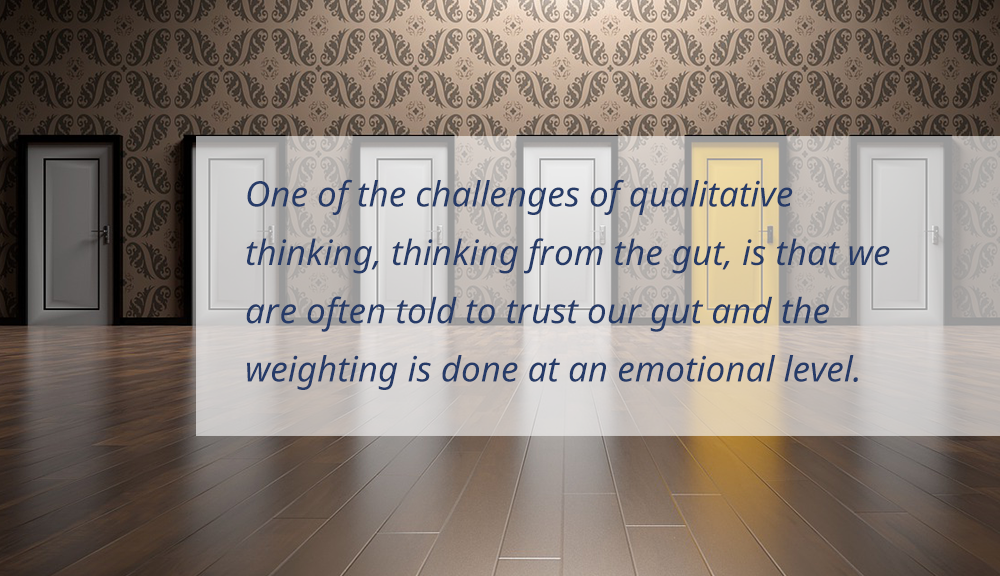As you know I’ve been writing from time to time on how to improve our decision-making processes within Tahzoo. We are good qualitative decision makers and I’d like to see us add some quantitative competency to our process. One technique is using probabilistic modeling to improve prediction. In a business setting we need to make the best decision based on an expected outcome, however; more often than not there are several possible outcomes that need to be considered.
One of the challenges of qualitative thinking, thinking from the gut, is that we are often told to trust our gut and the weighting is done at an emotional level. We evaluate the outcome we feel strongest about and often the one that we’re most hopeful will happen and then decide on a course of action. This is a great strategy for matters of the heart or in situations where the information is extremely limited.
At Tahzoo, we are often faced with multiple possible outcomes, for example, how long will it take us to fill a critical role in the business, and how does that impact projects and revenue? Is the multiple-year lease for the new office we are about to sign going to be large enough to support the number of people we expect to hire based on our growth projections?
With each of these questions, you need to make an estimate of the likelihood or probability of something so you can plan for the next steps. What do you do when there are multiple possibilities, how do you chose a path? Over the years I’ve developed a technique in which I try to consider all of the possible outcomes. I spend my idle thinking time thinking about people’s motivations, or alignment of interests, I gather data when possible, I ask people what they think will happen and why. Then lastly and probably most importantly I try to remember situations that are similar and my prediction was wrong and why.
After I’ve had time to think the issue through, (sometimes I wish I had more time but that is the way it goes at Tahzoo) I pick what I think are the three most likely outcomes. So for the sake of example, let’s take the lease situation… after much consideration, I believe our compound growth will require us to hire 100, 150 or 300 people over the next 7 years. When I weigh these possibilities to do my best to give them a percentage likelihood of happening base on all the available information.
Now there are a number of other techniques that I use, but I thought this one would be good to start with. So next time you have a decision that includes predicting the future or several possible outcomes try this method and let me know what you think.
For those of you who in enjoy math, send me a note and let’s get into probabilistic modeling, it is the future of our programming strategies for personalization. I am also a big fan of Monte Carlo simulations and Bayesian decision-making theory and computation.

